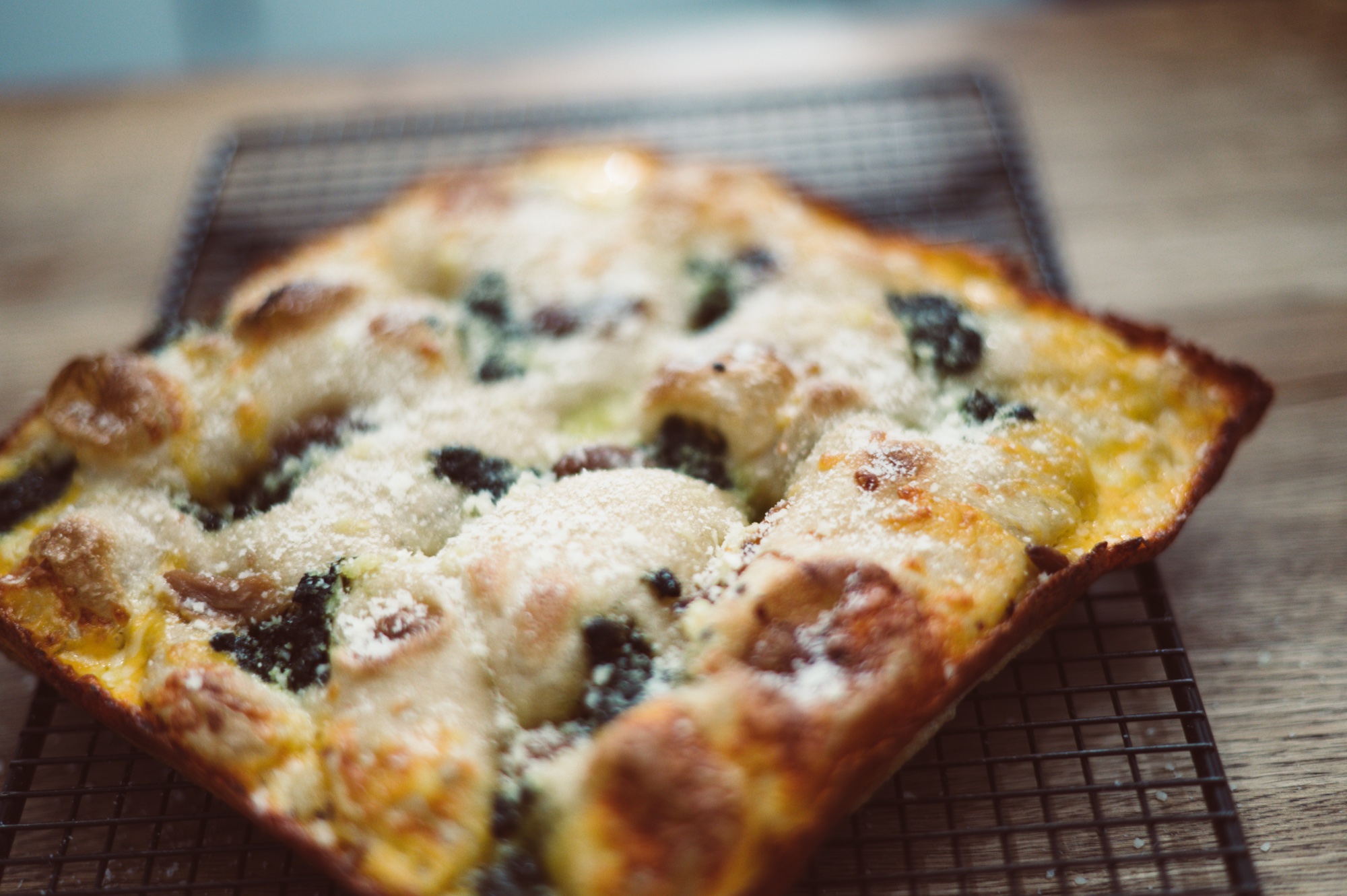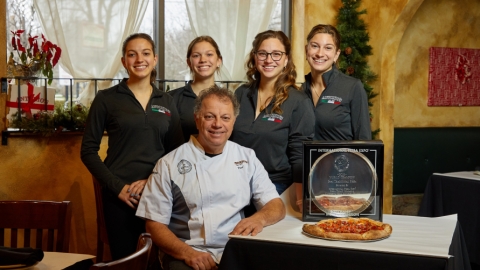Twice as Nice
For Nick Kincses, owner of Twice Baked Pizza Company in Niles, Michigan, pizza is a passion. His approach to pizza results in a sensory experience that looks, tastes and sounds different from a traditional pie.
Kincses believes that each part of the pizza matters. He is against covering the pie with a white cheese mixture, which he believes masks the best parts. His pizza is 60% crust, 30% sauce and 10% toppings.
“There is so much bread. The sauce has to be bussing and smack really hard. Those two things are 90% of the pizza,” he says of his not-quite-Sicilian, not-really-Detroit style pizzas. “People say I’m making focaccia bread. You can call it pizza. You can call it whatever you want. I’m trying to get people to realize that once you strip down all the toppings, all that cheese, there can be really, really good stuff just at the base.”
Kincses’ pizza is par-baked, or twice baked, as the company name suggests. The high-hydration dough is mixed and then cold-fermented for three to five days before its first bake without sauce or toppings. Only after the crust has been baked on its own does the step that makes it pizza commence—the second bake of the crust with toppings.
Kincses uses different pans to caramelize the crust around the edges. The pizza is most cherished by those who enjoy an East Coast pizza, or “gramma pie.”
The Twice Baked Pizza Company’s menu includes offerings such as G-Bread, Kincses’ take on garlic bread, with “brick cheese cubes and confit garlic pressed into the dough, frico border, Italian herb pesto, minced garlic butter, finishing cheese.” Frico is the crispy browned cheese on the edges.
“It encompasses everything that is savory and beautiful and loving about stoner food, but is elevated,” Kincses says.
Other pizzas on the menu, like “My first LOVE” include Kincses’ homemade red sauce, mozzarella and aged provolone, special “cup and char” pepperoni, and “finishing cheese. The finishing cheese is a staple of Kincses’ process and is a blend of hard cheeses that settles into the cupped pepperoni and adds umami.
Kincses uses stone-ground ancient grains such as spelt and einkorn from Janie’s Mill in Ashkum, Illinois, to make his own mixes with 00 pizza flour. While the crust is thick and crunchy and gives an intentionally varied experience in every bite, diners lucky enough to grab a slice can grab several more (without feeling stuffed), since the cold fermentation process has already begun breaking down proteins.
The delicate science behind perfecting the pie is what keeps Kincses going. He entered a professional kitchen for the first time after he realized his former industrial job and his love for cannabis was a mismatch. His first kitchen experience was at the late Heavenly Goat Brewing Company in Granger, Indiana. Everything at the brewery was made in-house, and Kincses learned, at age 31, to pick up skills in the kitchen quickly. In no time, he found himself heading the baking operation of the company, which included working the brewery’s spent grains into the pretzels and perfecting the brioche buns for burgers.
Kincses later honed his skills working at a pizza place. At one point, he was hand mixing the amount of dough that wears down machine mixers (of which there were none). “The most dough I made in a day was 133 pounds by hand, and I would do that six days a week, for almost a year. You could say I could compete with a machine,” he says.
A transplant to Niles from Mishawaka, Indiana, Kincses has baking in his blood. His grandfather was one of the original bakers with the beloved West End Bakery, which has resided on West 7th Street in Mishawaka for decades
Despite his kitchen mastery, Kincses remains humble.
“What I’m comfortable calling myself is a pizza maker. Being called a chef, I still feel like you need to go to school,” he says. “I love food. I’m a foodie. I love being in the kitchen. I’m a kitchen person.”
Beyond what he has learned working in the restaurant industry, Kincses credits books for much of what he puts into action. “I like to read and then practice. When I [mess up], I learn better,” he says. “If you just make pizza over and over again, you’re going to get better at it. I’ve gotten more ‘dough reps’ than most people, but I always want to improve.”







